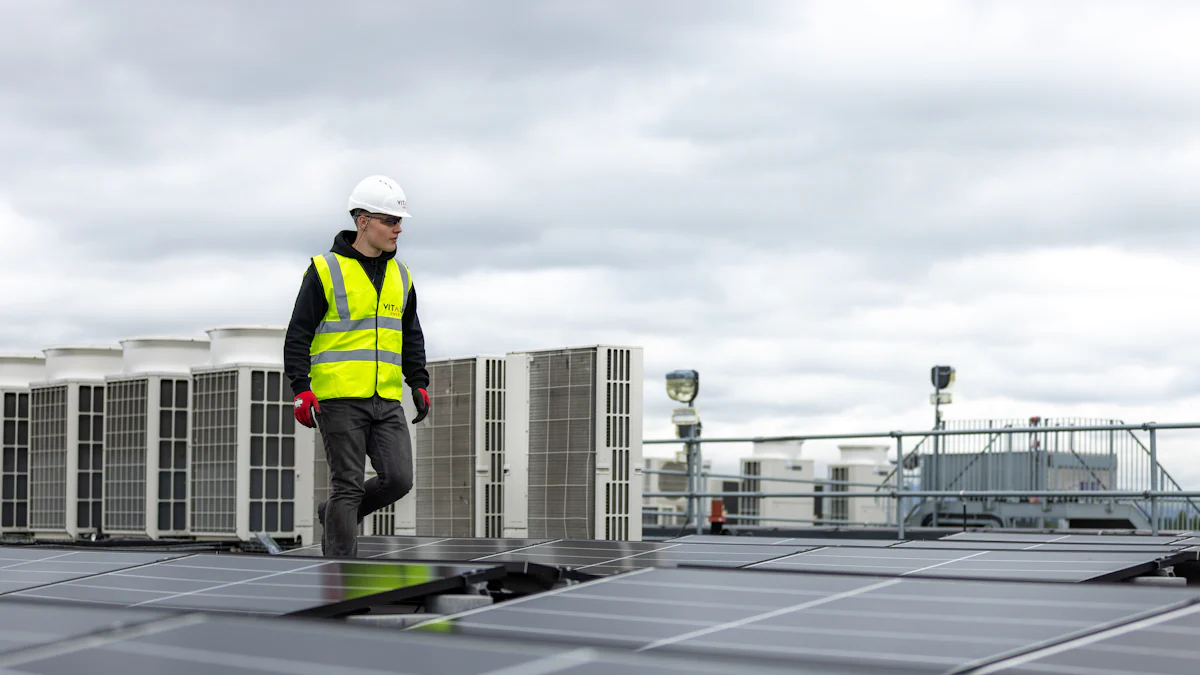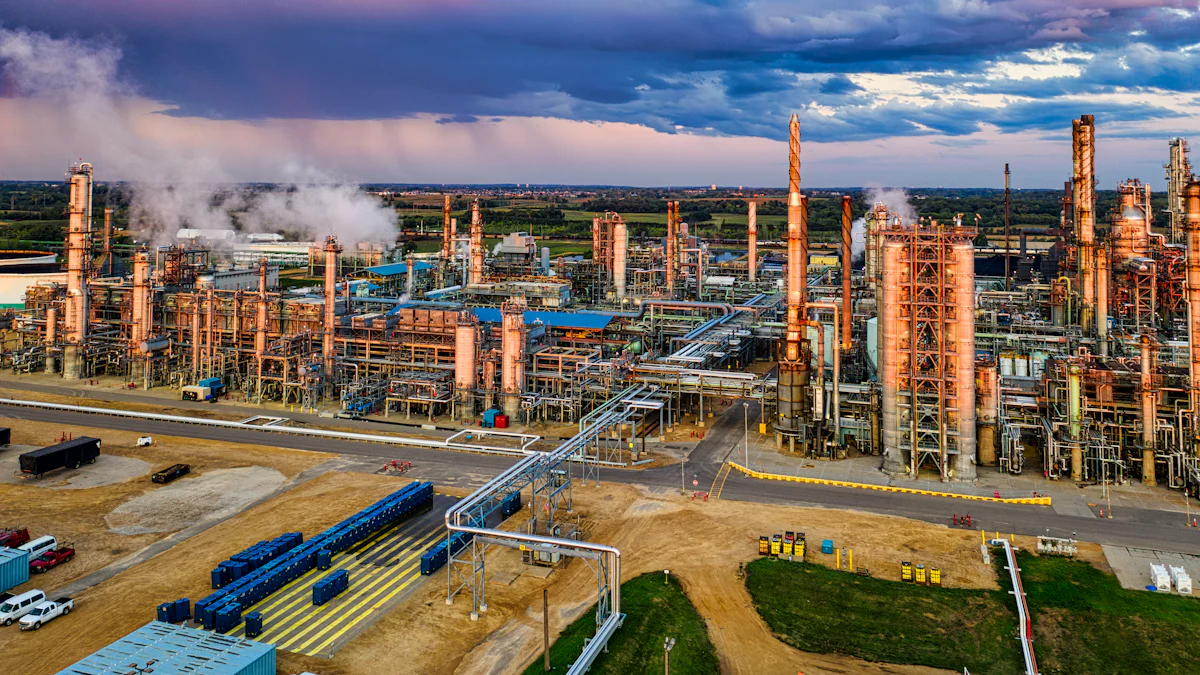
News

Using a VFD controller can greatly enhance energy efficiency in industrial systems. A VFD controller optimizes motor speed and torque, effectively reducing energy waste. For instance, a VFD with Vector Pump Controller can significantly lower energy consumption in various applications, such as HVAC systems, where VFD-controlled fans can cut energy usage by as much as 70%. Moreover, VFDs help industries minimize carbon emissions, supporting sustainability goals while also reducing operational expenses.
Key Takeaways
VFD controllers adjust motor speed and power, cutting energy waste.
Using VFDs in HVAC and pumps can save up to 70% energy.
Keeping VFDs maintained helps them work well and last longer.
Understanding VFD Controllers and Their Functionality
What Is a VFD Controller?
A VFD controller, or Variable Frequency Drive, is a device that regulates the speed and torque of electric motors. It achieves this by adjusting the frequency and voltage of the power supplied to the motor. Unlike traditional motor control systems, which often waste energy by running motors at full capacity regardless of demand, VFD controllers allow you to match motor speed to the specific requirements of your operation. This precision not only enhances energy efficiency but also reduces wear and tear on equipment, extending its lifespan.
How Variable Frequency Drives Work
Variable frequency drives operate through a series of steps. First, the rectifier converts alternating current (AC) into direct current (DC). The DC bus then stabilizes and stores this energy. Finally, the inverter transforms the DC back into AC, adjusting the frequency and voltage to control motor speed. This process ensures that the motor runs only as fast as needed, maximizing energy efficiency. Advanced techniques like Pulse Width Modulation (PWM) further refine this control, enabling smoother operation and better energy savings.
Key Features of VFD Systems
VFD systems come equipped with several essential components:
Rectifier: Converts AC power to DC power.
DC Bus: Acts as a central link, storing and supplying DC power.
Inverter: Converts DC back to AC, controlling frequency and voltage.
Control Unit: Monitors and adjusts parameters for optimal performance.
These features make VFDs indispensable in industrial drives, offering precise control over motor speed and torque. Additionally, they include harmonic control mechanisms to minimize power disturbances, ensuring stable and efficient operation. By integrating these features, VFD controllers help industries achieve significant energy savings while maintaining smooth production processes.
Energy-Saving Principles of VFD Controllers
Precision Speed Control for Energy Efficiency
A key energy-saving principle of a vfd controller is precision speed control. By adjusting motor speed through frequency and voltage, you can ensure the motor operates only as fast as needed. This reduces energy waste, especially in industrial applications with variable load demands. For example, in pumping systems, maintaining an optimal Volts per Hertz (V/Hz) ratio prevents overheating and inefficiency. The Affinity Law highlights the impact of speed adjustments, where reducing motor speed by just 20% can cut energy consumption by up to 50%. Advanced control algorithms in variable frequency drives further enhance accuracy, achieving precise motor control and maximizing energy efficiency.
Load-Dependent Power Adjustment
Another energy-saving principle involves adjusting motor speed to match workload requirements. This feature minimizes energy waste during periods of low demand. For instance, in hvac systems, vfd-controlled fans can reduce energy usage by up to 70%. Similarly, in cooling applications, vfds can achieve energy savings of up to 35%. The Affinity Law again demonstrates how small speed reductions lead to significant energy savings, making this principle vital for industrial energy efficiency. By tailoring power output to the load, you can lower operating expenses while maintaining optimal performance.
Regenerative Braking for Energy Recovery
Regenerative braking is an innovative feature of frequency inverters that captures energy during braking operations. Instead of dissipating this energy as heat, the system recycles it for reuse. This principle is particularly beneficial in industrial drives where frequent braking occurs. For example, energy recovered during braking can assist in accelerating another motor, reducing reliance on external power. This not only improves energy efficiency but also supports sustainable production practices.
Reducing Energy Losses in Start-Stop Cycles
Frequent start-stop cycles can lead to significant energy losses and mechanical stress. VFD controllers mitigate these issues by implementing soft start and stop functions. Gradual ramping of motor speed reduces electrical disturbances like voltage dips or spikes, enhancing system reliability. This approach also minimizes wear and tear on equipment, extending its lifespan. By reducing energy losses during these cycles, you can achieve smoother operations and greater energy savings in industrial applications.
Practical Applications and Benefits of VFDs

Energy Savings in HVAC and Pumping Systems
You can achieve remarkable energy savings by using VFDs in HVAC and pumping systems. These systems often operate under variable load conditions, making them ideal for VFD implementation. For example:
VFD-controlled fans in HVAC systems can reduce energy usage by up to 70%.
Centrifugal pumps and compressors can achieve energy savings of 20-50%.
By allowing motors to ramp up speed gradually, VFDs reduce stress on components, extending their lifespan. They also optimize motor speed to match real-time requirements, minimizing energy consumption. This precision ensures that only the necessary power is used, leading to significant cost reductions and enhanced comfort levels in HVAC systems.
Cost Reduction in Manufacturing and Processing
In manufacturing and processing industries, VFD controllers help you achieve significant cost savings. By adapting motor speed to match workload requirements, VFDs reduce energy consumption during low-demand periods. This can cut energy costs by more than 40% of the total cost of ownership. Additionally, VFDs limit starting current, reducing thermal stress and preventing premature insulation breakdown. Smooth acceleration and deceleration also decrease strain on mechanical components, further lowering maintenance costs.
Extending Equipment Lifespan Through Optimized Operation
VFDs play a crucial role in extending the lifespan of industrial equipment. Soft starts and stops reduce mechanical stress, potentially doubling the service life of gears, belts, and chains. Pumps and fans benefit from controlled acceleration and deceleration, which minimizes cavitation and impeller wear. In some applications, VFDs can extend bearing life by up to 100% and increase motor winding lifespan by 3-5 years. By reducing thermal stress and ensuring optimal speed operation, VFDs enhance the durability of your equipment.
Environmental Impact and Sustainability Benefits
VFDs contribute to sustainability by improving energy efficiency and reducing carbon emissions. They adjust pump speeds to match real-time requirements, conserving energy and preventing over-pumping. This is especially important in water-scarce regions. By reducing energy consumption in industrial applications, VFDs help lower greenhouse gas emissions. For instance, implementing VFDs in variable torque load applications like centrifugal pumps can save up to 50% energy. Globally, this technology can reduce greenhouse gas emissions by approximately 40%, aligning with environmental goals and promoting sustainable production practices.
Overcoming Challenges in VFD Implementation
Addressing Harmonics and Electrical Noise
Harmonics and electrical noise can disrupt the performance of your VFD controller and connected equipment. Harmonics often lead to overheating, reduced equipment lifespan, and inefficient power use. Voltage distortion can damage sensitive devices, while reactive power issues may result in penalties from utility providers. To address these challenges, you can use harmonic filters to minimize distortions and improve power quality. Soft start and stop controls help reduce voltage fluctuations, ensuring smoother motor operation. Additionally, power factor correction capacitors can enhance energy efficiency by optimizing reactive power usage. These strategies not only protect your equipment but also contribute to maximizing energy efficiency in your industrial drives.
Ensuring Proper Maintenance and Monitoring
Proper maintenance ensures the long-term performance of your VFD. Keeping the unit clean prevents dust accumulation, which can block airflow and cause overheating. Ensuring the VFD remains dry reduces the risk of moisture-related damage. Tight connections are essential to avoid performance issues caused by mechanical vibrations or heat cycles. Regular monitoring allows you to detect potential problems early, reducing downtime and repair costs. By following these practices, you can extend the lifespan of your frequency inverter and achieve consistent cost savings in your production processes.
Selecting the Right VFD for Specific Industrial Needs
Choosing the right VFD for your application requires careful consideration. Ensure compatibility between the VFD and your motor type to prevent damage. Match the VFD's voltage and power ratings with your motor and power supply. Evaluate the required speed control features, such as frequency range and accuracy, to meet operational demands. Consider environmental factors like temperature and humidity, especially for outdoor setups. For application-specific needs, assess torque requirements and duty cycles to ensure optimal motor speed control. Advanced features like communication protocols and remote monitoring can further enhance your system's efficiency. Selecting the right VFD ensures reliable motor control and supports your energy-saving goals.
VFD controllers play a vital role in improving energy efficiency across industrial drives. By precisely controlling motor speed, they reduce energy waste and extend equipment lifespan. Their adaptability to varying operational demands makes them essential for industries aiming to optimize production while lowering costs. For example, VFD-controlled fans in HVAC systems can cut energy usage by up to 70%. Additionally, frequency inverters help industries achieve sustainability by reducing carbon emissions. If widely adopted, they could lower global electricity consumption by up to 30%. Addressing challenges like harmonics ensures you can fully leverage these benefits, contributing to a greener future.
FAQ
What industries benefit the most from VFD controllers?
Industries like manufacturing, HVAC, water treatment, and mining see the most benefits. VFDs optimize motor performance, reduce energy costs, and improve equipment lifespan in these sectors.
Can VFD controllers work with all types of motors?
No, VFDs work best with AC motors like induction or synchronous motors. Always check compatibility with your motor type before installation.
How do VFDs contribute to sustainability?
VFDs reduce energy consumption and carbon emissions. By optimizing motor speed, they help industries meet environmental goals and promote sustainable production practices.
Please give us a message